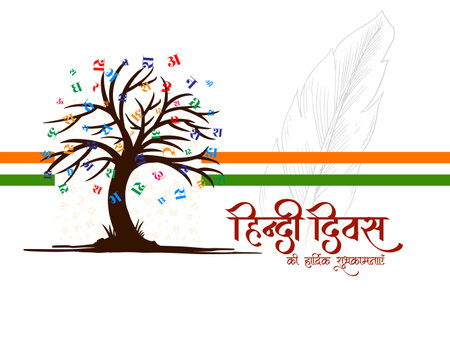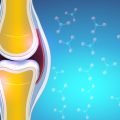1. Introduction to Postnatal Rehabilitation in the Indian Context
Postnatal rehabilitation is a crucial aspect of maternal and child health, especially in a diverse and populous nation like India. The period following childbirth is often marked by significant physical, emotional, and social changes for mothers. In India, where traditional practices blend with modern healthcare, the importance of comprehensive postnatal care cannot be overstated. Maternal health has long been a priority within national public health agendas due to the country’s high birth rate and varying socio-economic factors that impact women’s well-being after delivery. As urban and rural communities face unique challenges—ranging from access to quality healthcare to cultural taboos around postnatal rest and recovery—there is a pressing need for structured rehabilitation programmes.
Government initiatives and non-governmental organisations (NGOs) have played instrumental roles in addressing gaps in postnatal rehabilitation services across the country. By providing education on nutrition, mental health support, physiotherapy, and community-based interventions, these programmes aim to reduce maternal morbidity and promote holistic recovery. This analysis explores how such efforts are tailored to meet the distinct needs of Indian mothers, setting the stage for an in-depth discussion on the effectiveness and reach of government and NGO-led postnatal rehabilitation strategies.
Government Postnatal Rehabilitation Schemes
In India, the central and state governments have implemented several postnatal rehabilitation programmes to improve maternal and child health outcomes. These schemes are designed to address the challenges faced by new mothers, especially those from economically weaker sections and rural backgrounds. Two of the most prominent central initiatives are the Janani Suraksha Yojana (JSY) and the Pradhan Mantri Matru Vandana Yojana (PMMVY). Both programmes aim to promote institutional deliveries and provide financial as well as nutritional support during the crucial postnatal period.
Janani Suraksha Yojana (JSY)
The Janani Suraksha Yojana is a safe motherhood intervention under the National Health Mission (NHM). Its primary objective is to reduce maternal and neonatal mortality by encouraging institutional deliveries among pregnant women, particularly those below the poverty line or belonging to scheduled castes/tribes. JSY provides cash assistance to mothers and Accredited Social Health Activists (ASHAs) for facilitating safe delivery in government or accredited private health facilities. The scheme’s outreach has been significant, especially in rural India, where awareness about institutional deliveries was previously limited.
Pradhan Mantri Matru Vandana Yojana (PMMVY)
PMMVY is a maternity benefit programme launched by the Ministry of Women & Child Development. This scheme offers partial wage compensation to pregnant and lactating mothers for wage loss during childbirth and childcare. It also aims to provide conditions conducive to safe delivery and good nutrition. Under PMMVY, eligible beneficiaries receive a direct benefit transfer of Rs. 5,000 in three instalments upon meeting specific health check-up milestones. The programme targets first-time mothers across India with a special emphasis on improving nutrition and regular health monitoring.
Objectives & Outreach: A Comparative Table
| Scheme | Main Objective | Key Benefit | Target Beneficiaries | Geographical Focus |
|---|---|---|---|---|
| Janani Suraksha Yojana (JSY) | Reduce maternal & neonatal mortality via institutional deliveries | Cash incentive for mother & ASHA worker | BPL families, SC/ST women, rural population | Pan-India with focus on high-risk states |
| Pradhan Mantri Matru Vandana Yojana (PMMVY) | Promote safe delivery, nutrition & wage compensation | Direct cash transfer in three instalments | Pregnant & lactating women, first live birth | All states & UTs in India |
Cultural Integration and Accessibility
The success of these schemes depends largely on their ability to connect with local communities through culturally relevant messaging in regional languages and by leveraging community health workers like ASHAs and Anganwadi Workers (AWWs). Both JSY and PMMVY have evolved to include digital tracking systems such as Mother Child Protection Cards and mHealth platforms for better monitoring and transparency. However, challenges remain in remote areas due to socio-cultural barriers, lack of awareness, and infrastructural gaps. Continuous efforts are being made by both central and state governments to strengthen outreach through partnerships with Panchayati Raj Institutions and local NGOs, ensuring that every mother receives timely postnatal care and support.

3. Role of NGOs and Community-Based Organisations
Non-governmental organisations (NGOs) and community-based organisations play a vital role in the landscape of postnatal rehabilitation in India. Their presence is strongly felt across both rural and urban settings, where they bridge crucial gaps in government infrastructure and services. These organisations leverage local insights, culturally sensitive approaches, and strong grassroots connections to deliver impactful programmes tailored for Indian mothers and newborns.
Major Players: SEWA, SNEHA, and CRY
Prominent NGOs such as SEWA (Self Employed Women’s Association), SNEHA (Society for Nutrition, Education & Health Action), and CRY (Child Rights and You) have pioneered innovative models of maternal and postnatal care. SEWA, rooted deeply in Gujarat, focuses on empowering women through livelihood support while integrating health interventions. SNEHA operates mainly in Mumbai’s informal settlements, providing home-based neonatal care, nutrition counselling, and emergency referral linkages. CRY adopts a rights-based approach, advocating for child and maternal health at policy levels while running community clinics and awareness drives.
Operational Methods Unique to the Indian Context
NGOs typically employ local women as community health workers or volunteers—such as ASHAs (Accredited Social Health Activists)—who are trusted members within their communities. They conduct home visits for new mothers, arrange mother support groups or ‘Mahila Mandals’, and use vernacular languages to ensure inclusivity. NGOs often collaborate with anganwadis (rural child care centres) under the Integrated Child Development Services (ICDS), aligning their interventions with government efforts but bringing more flexibility and responsiveness to local needs.
Impact on Communities
The impact of these NGOs is significant: they have increased awareness about postnatal nutrition, facilitated immunisation drives, provided psychosocial support for postpartum depression—a topic often stigmatised in India—and advocated for institutional deliveries. By involving families and local panchayats in decision-making processes, they help create sustainable changes in postnatal care practices. This community-driven model ensures that solutions are not just top-down but also bottom-up, respecting cultural nuances while promoting scientific best practices.
4. Cultural and Socio-Economic Influences
The landscape of postnatal rehabilitation in India is deeply shaped by its rich tapestry of cultural traditions, family dynamics, and socio-economic realities. Both government and NGO programmes must navigate these influences to ensure successful implementation and acceptance across diverse communities.
Traditional Beliefs and Practices
In many Indian regions, age-old customs dictate postnatal care routines. For instance, the practice of jaapa or confinement, where new mothers remain indoors for 40 days post-delivery, is prevalent in North India. While this offers rest, it may restrict access to external rehabilitation services unless home-based interventions are arranged. In contrast, South Indian communities may emphasize herbal baths and massages, which can either complement or conflict with modern rehabilitation protocols depending on local beliefs.
Family Systems: The Role of Joint Families
The joint family system remains influential in rural and semi-urban India. Elders, especially mothers-in-law, often guide postnatal practices based on generational knowledge. Programme adoption is smoother when these key decision-makers are involved in awareness sessions or community outreach. Nuclear families, more common in urban areas, may show greater openness to adopting NGO-led or government-supported rehabilitation models due to increased autonomy.
Socio-Economic Barriers and Opportunities
| Socio-Economic Factor | Impact on Programme Adoption |
|---|---|
| Poverty | Limits access to private rehabilitation services; increases dependence on free or subsidised government/NGO initiatives |
| Education Level | Higher maternal literacy correlates with better understanding and uptake of postnatal programmes |
| Urban vs Rural Divide | Urban mothers benefit from proximity to healthcare centres; rural women often rely on community health workers (ASHA/AWW) |
| Caste and Social Hierarchy | Certain castes may face exclusion from mainstream programmes; targeted interventions by NGOs help bridge gaps |
Regional Differences in Programme Implementation
The effectiveness of postnatal rehabilitation programmes often hinges on region-specific cultural adaptation. For example:
- Northern States: Greater influence of patriarchal norms may delay participation unless male family members are sensitized.
- Southern States: Traditional midwives (dais) play a critical role; integrating them into formal training enhances outreach.
- Northeastern States: Tribal communities exhibit unique customs; culturally sensitive communication is crucial for programme success.
Conclusion: Customisation for Impactful Rehabilitation
An effective analysis of government and NGO postnatal rehabilitation initiatives reveals that tailoring approaches to align with traditional beliefs, leveraging family systems as support structures, and addressing socio-economic disparities are pivotal for driving meaningful change across Indias diverse landscape.
5. Programme Outcomes and Challenges
Assessment of Effectiveness
The effectiveness of government and NGO postnatal rehabilitation programmes in India has shown a mixed picture. Initiatives such as Janani Suraksha Yojana (JSY) and Pradhan Mantri Matru Vandana Yojana (PMMVY) have contributed positively to maternal and infant health outcomes, particularly in rural areas. NGOs like SNEHA and ARMMAN have provided vital support with community-based interventions, leading to improved awareness and early intervention for postpartum complications.
Success Stories
Several success stories have emerged from the field. For example, in Maharashtra, collaboration between local ASHA workers and NGOs has increased the uptake of postnatal check-ups among women from marginalised communities. In Tamil Nadu, government schemes combined with mobile health units have made it easier for new mothers in remote villages to access essential services, resulting in reduced maternal morbidity rates.
Limitations
Despite these achievements, many programmes face significant limitations. There is often a lack of comprehensive follow-up after delivery, leading to missed opportunities for early detection of postnatal depression or physical complications. Some schemes are limited in scope, focusing mainly on immediate post-delivery care without addressing long-term rehabilitation needs like nutrition counselling or mental health support.
Key Barriers
Funding Constraints
Insufficient and inconsistent funding remains a major challenge. Many government programmes are under-resourced, leading to shortages of staff, equipment, and medicines at primary health centres. NGOs often rely on grants or donations that can fluctuate, affecting the continuity of their initiatives.
Lack of Awareness
A significant portion of the target population remains unaware of available services due to inadequate outreach and cultural taboos around discussing postnatal issues. Myths and misconceptions about postnatal practices further hinder programme effectiveness.
Accessibility Issues
Geographical barriers persist, especially in states like Uttar Pradesh, Bihar, and Jharkhand where transportation infrastructure is weak. Women living in remote tribal belts often need to travel long distances to reach healthcare facilities, which discourages regular follow-up visits and timely intervention.
Way Forward
Addressing these challenges will require collaborative efforts between the government, NGOs, community leaders, and frontline workers such as ASHAs. Focused strategies on sustained funding, culturally sensitive awareness campaigns in regional languages, and leveraging technology like telemedicine can bridge existing gaps and enhance the overall impact of postnatal rehabilitation programmes across India.
6. Best Practices and Recommendations for Improvement
Optimising Programme Outreach in Indian Communities
For postnatal rehabilitation programmes to be truly effective in India, outreach strategies must reflect both the vast geographical diversity and the socio-cultural complexity of the country. Successful initiatives often leverage Accredited Social Health Activists (ASHAs) and Anganwadi workers who have deep roots within local communities. Expanding their training to include advanced postnatal care skills, digital record-keeping, and awareness about mental health can significantly boost programme impact. Mobile health vans, telemedicine consultations, and community-based awareness drives—particularly in rural and tribal areas—should be scaled up through public-private partnerships for greater accessibility.
Bridging Policy Gaps for Seamless Service Delivery
Despite robust government frameworks like Janani Suraksha Yojana (JSY) and NGO-led interventions, gaps remain in coordination and continuity of care. Establishing a unified digital platform where all stakeholders—including hospitals, NGOs, and government agencies—can track beneficiaries’ progress will reduce duplication of services and ensure no mother is left behind. Policy amendments should also prioritise seamless referral pathways between institutional delivery points and home-based postnatal follow-ups, with special focus on high-risk mothers.
Incorporating Culturally Relevant Care Strategies
India’s cultural diversity necessitates that rehabilitation programmes respect and integrate traditional practices wherever safe and appropriate. Customising dietary recommendations to include locally available foods, recognising the role of extended family systems, and involving community elders as peer supporters can foster acceptance and adherence. Collaboration with faith leaders can help dispel myths around postpartum care while encouraging health-seeking behaviour. Additionally, the use of regional languages in educational materials ensures better comprehension among mothers from varied backgrounds.
Suggestions Tailored for Indian Circumstances
- Localise Awareness Campaigns: Use folk media, street plays (nukkad nataks), and WhatsApp groups to spread messages about postnatal care.
- Enhance Incentive Structures: Increase incentives for frontline workers reaching difficult-to-access mothers, especially in hilly or remote regions.
- Mental Health Integration: Embed routine mental health screening into existing check-ups to address often overlooked postpartum depression.
- Strengthen Male Involvement: Develop targeted modules that encourage fathers’ participation in caregiving, drawing from successful pilot projects in Tamil Nadu and Maharashtra.
Conclusion
To transform postnatal rehabilitation in India, it is vital to blend global best practices with indigenous wisdom, ensuring inclusivity at every step. By optimising outreach mechanisms, closing policy loopholes, and rooting care strategies in local culture, both government and NGO programmes can better serve India’s new mothers—setting a benchmark for holistic maternal well-being across South Asia.

